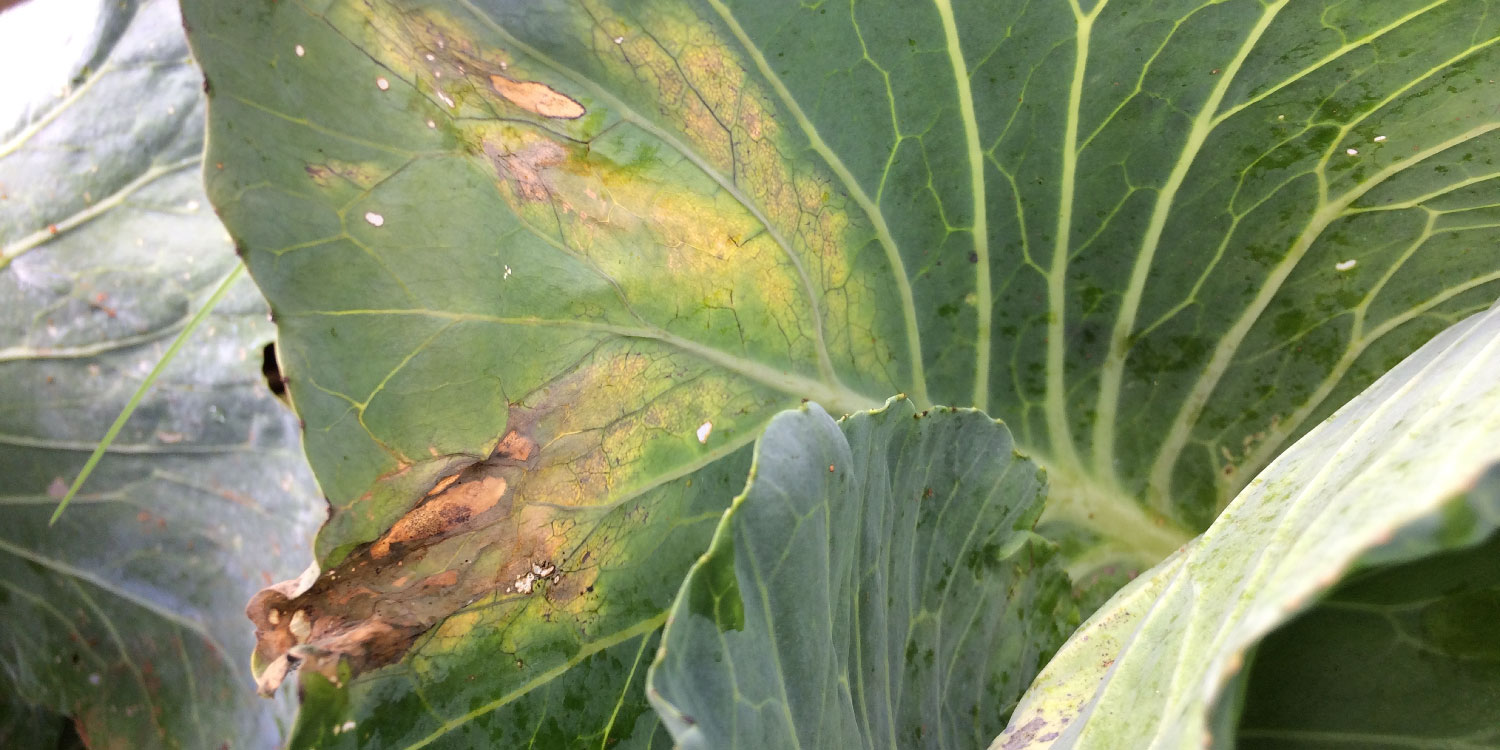Black rot is a bacterial disease caused by the bacterium Xanthomonas campestris pv. campestris, which is considered the most serious disease of crucifer crops. Disease development is favoured by warm and wet conditions and is capable of infecting the crop at any growth stage.
The major sources of the bacterium causing this disease are infested seed, infected transplants, and infected cruciferous weeds.
The disease is also known as blight, black stem, black vein, stem rot, and stump rot.
Host Range
All cruciferous crops are susceptible to black rot. However, radish and kale are less attacked.
Life Cycle
- campestris can survive in infested crop debris until it is completely decomposed and in soil for about 40-60 days. It spread within a crop by wind, splashing water, workers, equipment and insects.
The bacterium enters the leaf through the hydathodes, stomata and/ or injuries, spreads in the vascular system and wilt symptoms can be seen 5-15 hours later.
Infection & Symptoms
Infection causes two types of symptoms depending on whether it is systemic or local. Seedlings that are infected systemically turn yellow, drop lower leaves, and eventually die, while crops that are infected systemically due to use of contaminated seeds may not develop symptoms for quite some time.
The disease is easily recognized by the presence of chlorotic to necrotic V-shaped lesions extending from the leaf margins.
Initially, the infected tissue becomes pale green, turns yellow, then brown and may die.
In severe cases, the crop dies prematurely, head remain small, and quality is greatly reduced.
The veins in infected leaves, stems, and root may turn black because the pathogen produces an extracellular substance (polysaccharide) which plugs normal water flow. These blackened veins can be seen in stems and leaf petioles when cut crosswise.
Dark spots and blackened veins may also develop on cotyledons.
Soft rot can develop after black rot, causing more damages.
Management & Control
Black rot can be controlled through various ways. These include;
Chemical method
To effectively control the disease, Copper-based fungicides should be used.
They include the following;
- GREENCOP 500WP
- TRINITY GOLD 425WP
- COLONIZER 440WP
Whenever spraying any fungicide, it is advisable to mix it with INTEGRA 3ml/20l. This improves the efficacy of the fungicide.
Spraying OPTIMIZER helps in boosting the plant’s immunity.
Other methods
- Use resistant varieties.
- Crop rotation with non-cruciferous crops
- Use of disease free or certified planting materials
- Effective control of insects and weeds, especially the cruciferous weeds.
- Ensuring proper drainage and use raised beds.
- Routine inspection of seedlings and destroying the infected ones.
- Foliage should be dry when seedlings are transplanted.
- Avoiding overhead irrigation, to keep foliage dry.






